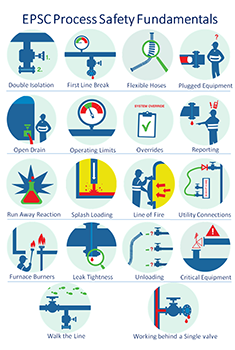EPSC Process Safety Fundamentals
Operational Principles to avoid incidents with hazardous chemicals.
Prepared by the EPSC Working Group on Process Safety Fundamentals.
(PSF for the Food and Pharmaceutical Industry can be found here)
Operational Principles to avoid incidents with hazardous chemicals.
Prepared by the EPSC Working Group on Process Safety Fundamentals.
(PSF for the Food and Pharmaceutical Industry can be found here)
EPSC Learning Video:
EPSC made a Learning Video on the topic Process Safety Fundamentals.
